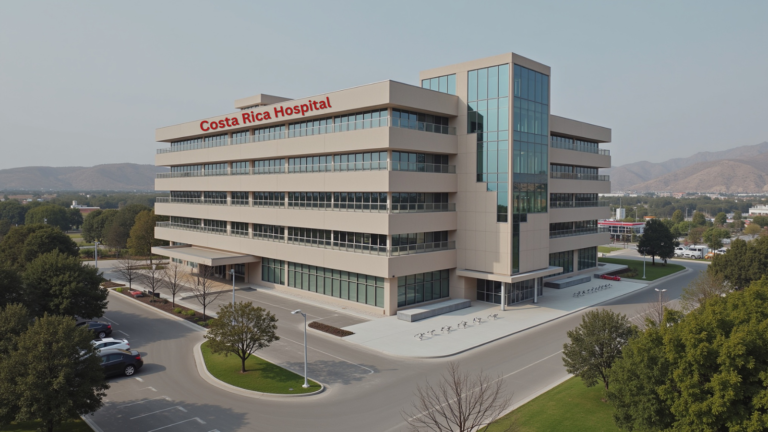In today’s fast-paced work environment, ensuring the safety of employees is not just a legal obligation but a moral imperative for every business.
Implementing effective safety measures is crucial in creating a secure workplace that minimizes risks and enhances productivity.
From identifying workplace hazards to fostering a culture of safety, this article delves into essential safety measures that every business must implement.
By understanding the importance of these practices, evaluating risks, providing adequate training, maintaining equipment, and preparing for emergencies, organizations can protect their most valuable asset: their employees.


Implementing Safety Training Programs
Implementing safety training programs is an essential aspect of fostering a secure workplace environment.
These programs should focus not only on the identification of potential hazards but also on the effective application of safety measures that protect employees from accidents and injuries.
By incorporating regular training sessions, organizations can ensure that all staff members are familiar with emergency protocols, the proper use of personal protective equipment, and the significance of reporting unsafe conditions.
Additionally, engaging employees in interactive safety drills can help reinforce the importance of compliance with safety measures, ultimately leading to a more informed workforce that prioritizes safety at all times.
Maintaining Proper Safety Equipment
When it comes to ensuring the well-being of employees and visitors alike, implementing robust safety measures is paramount.
This involves not only identifying potential hazards but also equipping everyone with the right tools to mitigate risks.
Proper safety equipment, such as helmets, gloves, and goggles, plays a crucial role in preventing injuries in various environments, from construction sites to laboratories.
Regular training and checks should be established to guarantee that all equipment is in optimal condition and that staff understand how to use them correctly.
By prioritizing these safety measures, organizations can foster a culture of safety that ultimately leads to increased productivity and morale.

Creating an Emergency Response Plan
Creating an emergency response plan is essential for any organization aiming to enhance its safety measures.
An effective plan serves as a guiding framework during crises, ensuring that everyone knows their roles and responsibilities.
Begin by identifying potential emergencies related to your specific environment, whether it’s natural disasters, fires, or medical emergencies.
Once you’ve assessed the risks, outline clear procedures that include evacuation routes, emergency contacts, and communication strategies.
Regular training sessions and drills should be conducted to familiarize staff with the plan, reinforcing the importance of safety measures in real-time scenarios.
Additionally, continuously review and update the plan to adapt to new threats or changes in your organization’s structure.
By taking these proactive steps, you can create a resilient response system that prioritizes the safety and well-being of everyone involved.
Encouraging a Safety-First Culture
In today’s dynamic workplace, fostering a safety-first culture is essential for ensuring employee well-being and enhancing productivity.
Implementing robust safety measures not only protects workers from potential hazards but also instills a sense of reassurance that their health and safety are prioritized.
Establishing clear communication channels for reporting unsafe conditions, providing regular safety training sessions, and engaging employees in the development of safety protocols can significantly contribute to building this culture.
Moreover, leading by example—where management actively adheres to safety measures—sets the standard for the entire organization, promoting a collective responsibility towards maintaining a safe work environment.
Ultimately, by placing emphasis on safety measures, companies can create a positive, secure atmosphere that ultimately drives success.
Frequently Asked Questions
What are the essential safety measures every business should implement?
Every business should implement safety measures such as evaluating workplace hazards, providing safety training programs, maintaining proper safety equipment, creating an emergency response plan, and fostering a safety-first culture.
How can I evaluate hazards and risks in my workplace?
To evaluate hazards and risks, conduct regular safety audits, engage employees in identifying potential risks, and analyze workplace practices to find areas of improvement.
Why is safety training important for employees?
Safety training is crucial as it educates employees about potential hazards, safe practices, and emergency procedures, thus reducing the likelihood of accidents and promoting a culture of safety.
What types of safety equipment should my business maintain?
Maintenance should focus on industry-specific safety equipment such as personal protective equipment (PPE), fire extinguishers, first aid kits, and machinery guards, ensuring they are regularly inspected and up to date.
How can I encourage a safety-first culture in my business?
Encouraging a safety-first culture can be achieved by involving employees in safety discussions, recognizing safe practices, providing ongoing training, and establishing clear safety policies and procedures.





